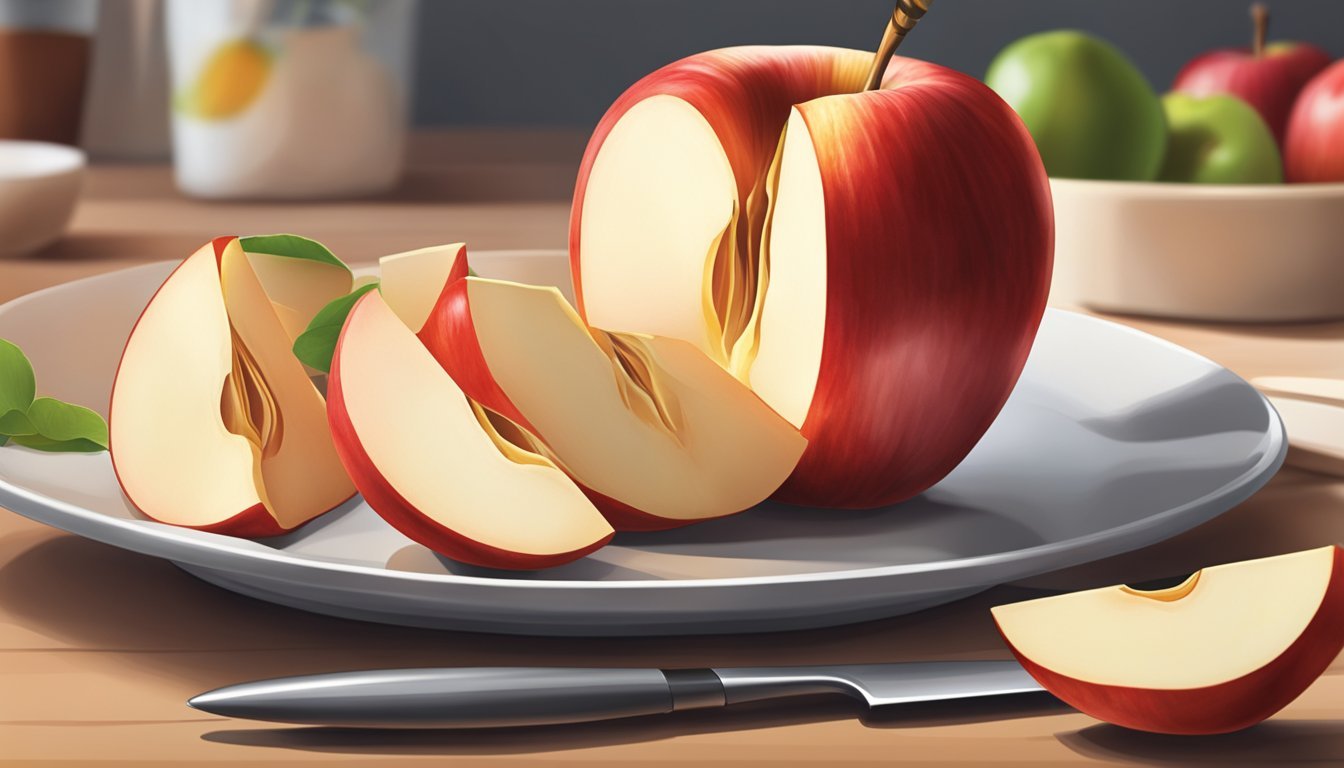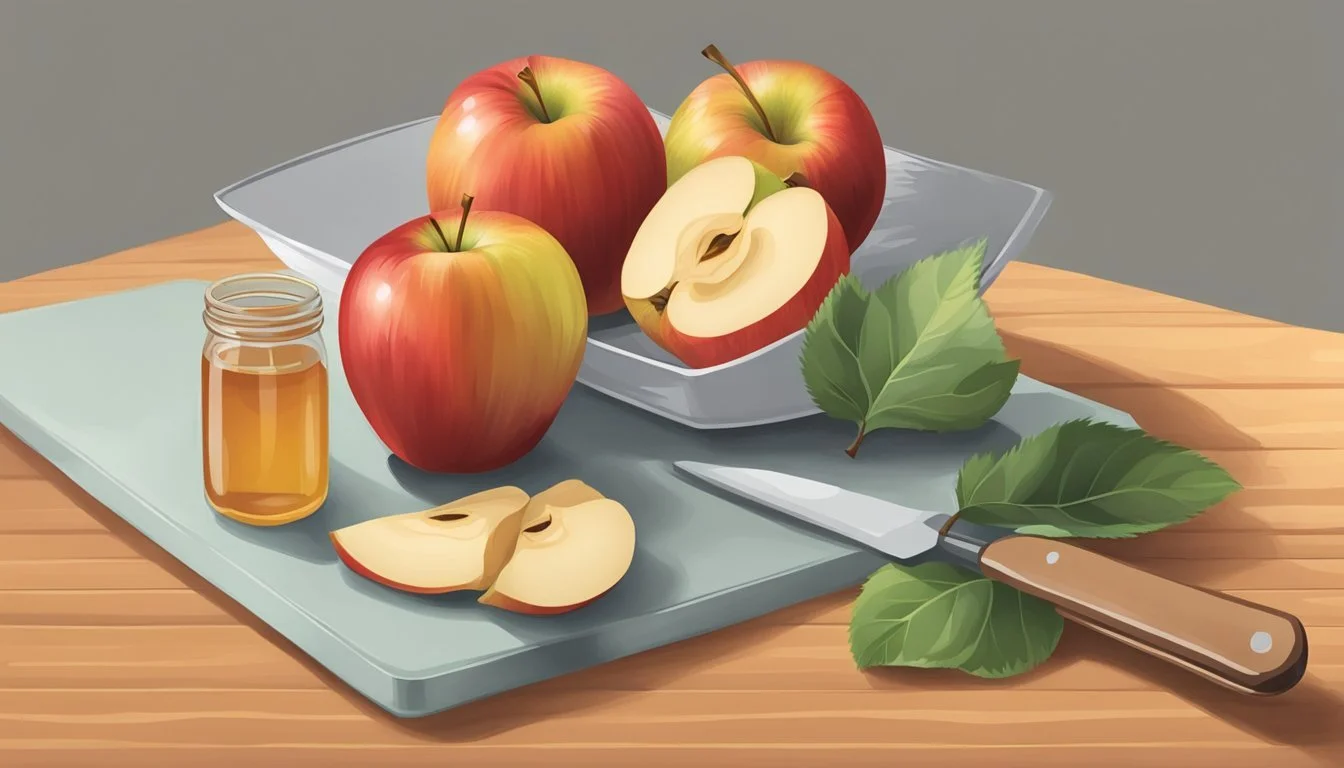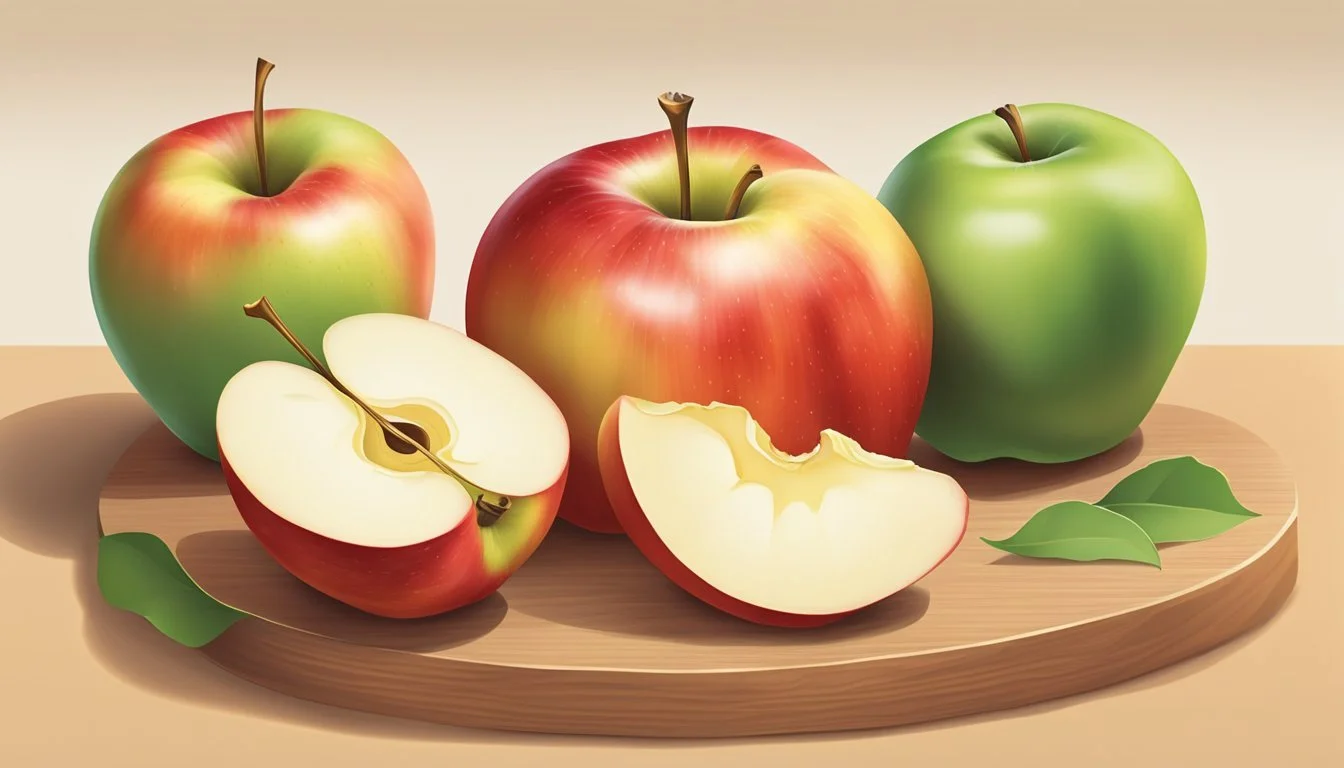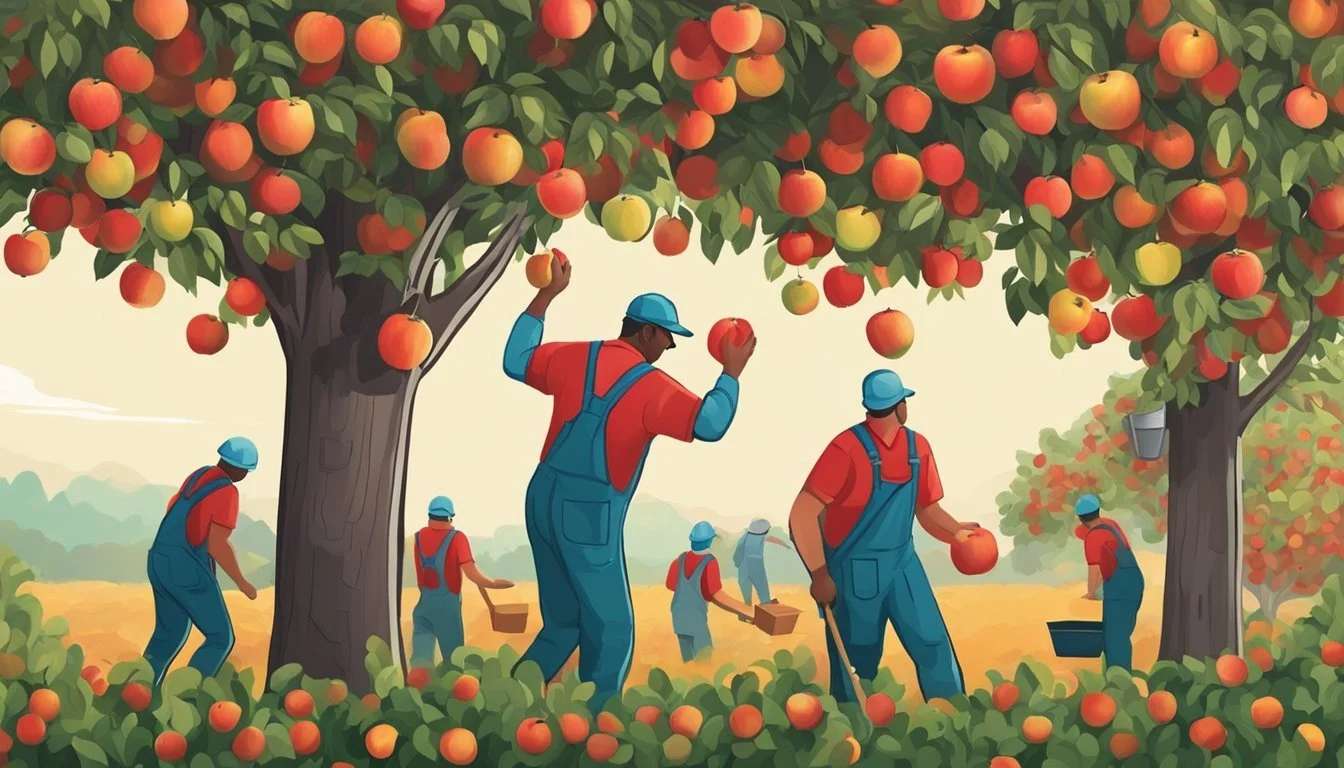How do you eat a Honeycrisp Apple?
Discover the Best Ways to Enjoy This Crisp Treat
Eating a Honeycrisp apple is a delightful experience that is both simple and enjoyable. This variety of apple is renowned for its sweet taste coupled with a slight tartness, and a juicy, crisp texture that is often characterized as refreshing. One can eat a Honeycrisp apple just as they would with any other variety: washing it thoroughly and biting into it raw, enjoying the fruit in its most natural state. The skin of the apple is full of nutrients, so it's advisable to eat it as well.
Incorporating Honeycrisp apples (how long do apples last?) into various recipes is also a common practice. Because of their balanced sweetness and firmness, they hold up well in cooking and baking, making them an excellent choice for dishes such as apple pies, muffins, cobblers, and other desserts. Chefs and home cooks appreciate the apple's ability to maintain its texture under heat, while its flavor can complement both sweet and savory dishes.
For those looking to keep track of their calorie intake, a medium-sized Honeycrisp apple contains approximately 95 calories. The fruit is a healthy snack option as it contains zero fat and is a good source of fiber. Whether one chooses to eat it raw or cooked, the Honeycrisp apple's nutritional profile makes it a smart addition to any meal or snack time.
History and Origin of Honeycrisp Apples
The Honeycrisp apple, a product of meticulous cultivation, has a distinct legacy rooted in the expertise of agricultural science. Its development was a remarkable achievement in apple breeding, resulting in an apple variety celebrated for its crisp texture and a sweet-tart flavor that has become a favorite among consumers.
Development at University of Minnesota
The University of Minnesota's apple breeding program began its journey in 1960 to create an apple that would thrive in the harsh climate of the upper Midwestern United States. The Honeycrisp was developed from a cross between the apple cultivars 'Keepsake' and an unnamed seedling designated as MN1627, which is believed to have been derived from the 'Honeygold' variety. The final product was initially known as MN1711, reflecting its experimental nature.
The path to Honeycrisp's success was not immediate. It took over a decade of rigorous testing and analysis before it was designated as a unique variety worth propagating.
Introduction of Honeycrisp to the Market
The Honeycrisp made its commercial debut in the early 1990s after it was released to the market in 1991. It was then that producers and consumers alike noticed its exceptional qualities. The apple's origin in Minnesota, along with its notable history in fruit breeding, has made it a symbol of innovation from the University of Minnesota. The variety quickly gained popularity due to its balance of sweetness and acidity, firm flesh, and notably long shelf life, which makes it remarkably keepsake in fruit quality over time.
Retailers and apple enthusiasts embraced the Honeycrisp, and it has since established itself as a premium product in grocery stores and markets, often commanding higher prices than other apple varieties.
Choosing and Storing Honeycrisp Apples
Selecting quality Honeycrisp apples and employing proper storage techniques ensure that the fresh, crisp texture and sweet flavor of this apple variety are preserved. Whether one buys them from supermarkets or picks them fresh from a backyard tree, understanding the characteristics of Honeycrisp apples will help to enjoy them for as long as possible during their season.
Selecting the Perfect Honeycrisp Apple
When choosing Honeycrisp apples, one should look for:
Color: A vibrant mix of red and green hues indicates maturity.
Firmness: The apple should feel firm to the touch, an indicator of its freshness and crispness.
Skin: Look for apples with smooth and unblemished skin. Avoid any with bruises or soft spots which can hasten spoilage.
Storage Tips for Longevity
Proper storage of Honeycrisp apples can significantly extend their shelf life:
Temperature: Store them at a cool 32-40°F (0-4°C) to slow down ripening. This temperature can usually be achieved in a refrigerator.
Humidity: Maintain humidity levels around 90-95%, which prevents the apples from drying out.
Airflow: Ensure apples are stored in a way that allows air to circulate around them, such as in perforated plastic bags or on a shelf.
Inspection: Regularly check the apples and remove any that show signs of spoilage to prevent it from spreading to others.
By following these specifics, one can enjoy the sweet, crisp flavors of fresh Honeycrisp apples throughout the season and possibly beyond.
Nutritional Profile of Honeycrisp Apples
The Honeycrisp apple is celebrated for its crisp texture and a balance of sweet and tart flavors. It's not only a tasty fruit but also a powerhouse of nutrients, making it a healthy addition to the diet.
Health Benefits
Honeycrisp apples are a valuable source of dietary fiber, which supports digestive health and helps in maintaining a feeling of fullness. They are packed with antioxidants, such as Vitamin C and quercetin, which contribute to overall health by preventing oxidative stress and inflammation. Eating Honeycrisp apples as part of a balanced diet can contribute to heart health as they contain no cholesterol and are rich in compounds that may help in reducing cholesterol levels. The presence of potassium also aids in regulating blood pressure.
Calories and Nutrients
Nutrients Amount Per 100g Calories 52 kcal Protein Less than 1g Fat 0g Carbohydrates 14g Fiber 3g Vitamin C Contributing
A medium-sized Honeycrisp apple typically contains 95 calories and has a high nutritional value considering its vitamin and mineral profile. It contains approximately 25 grams of carbohydrates, including natural sugars and dietary fiber, which are essential for energy. Honeycrisp apples contain negligible fat and are a cholesterol-free food, which can be important for those monitoring their cholesterol intake.
Preparing Honeycrisp Apples for Consumption
When eating Honeycrisp apples fresh, particularly for snacking, it's essential to properly wash, handle, and, if desired, peel and cut the fruit to optimize its taste and texture.
Washing and Handling
Before consuming a Honeycrisp apple, one should wash it thoroughly under running water to remove any potential residue or contaminants from its skin. It's recommended to gently scrub the apple's surface with a produce brush to ensure cleanliness, and then pat the apple dry with a clean towel. This step ensures the apple is safe and hygienic for snacking.
Peeling and Cutting Techniques
If one prefers their Honeycrisp apple peeled, especially when sensitive to the skin or using apples in certain recipes, a vegetable peeler or paring knife can be used to gently remove the skin. For slicing, first remove the stem and base of the apple, then cut it in half from top to bottom. To slice, place the halves flat side down on the cutting board and slice according to preference:
For wedges: Cut each half into four even slices.
For cubes: Make a series of parallel cuts in each half and then turn it to make perpendicular cuts.
Transfer the prepared apple pieces into a bowl or onto a plate for immediate consumption to maintain freshness and prevent browning.
Enjoying Honeycrisp Apples in Recipes
Honeycrisp apples are celebrated for their balance of sweetness and tartness, making them a versatile ingredient in many recipes. Their firm texture also holds up well when heated, making them ideal for baking and cooking.
Culinary Uses in Baking
In baking, the Honeycrisp apple's firmness and juicy content make it an excellent choice for structured desserts like apple pies and apple dumplings. Its ability to maintain shape under heat means that slices of Honeycrisp apples will remain distinct in each bite, adding texture to the soft indulgence of baked goods. When baking, pairing the apples with cinnamon and sugar brings out their natural sweetness and creates classic flavor profiles that are heartwarming and familiar.
Apple Pie: The balance of tart and sweet flavors is crucial, and Honeycrisp apples provide that perfect harmony.
Apple Crisp: A less structured dessert that showcases the apple's texture with a delightful crumb topping.
Savory and Sweet Pairings
Honeycrisp apples introduce a refreshing element to salads, marrying well with both savory and sweet components. The juiciness of the fruit provides a pleasing contrast to leafy greens while complementing nuts, cheeses, or even caramelized onions. Ingredients like caramel or a balsamic reduction can enhance the natural flavors of the apples in more inventive dishes.
Salads: Crunchy Apple Slaw or Fall Harvest Salad with components like nuts and cheese.
Sweet Pairings: Honeycrisp slices drizzled with caramel or folded into yogurt.
Honeycrisp Apple Recipes
A broad spectrum of Honeycrisp apple recipes is available to suit various tastes and occasions, from moist cakes to homey apple bread. These recipes often highlight the Honeycrisp's signature juiciness without losing the integrity of the fruit's flavor.
Cakes: Incorporate grated or chopped Honeycrisp apples into the batter for a moist, flavorful treat.
Cooking: Versatile Honeycrisp apples add flavor to both sweet and savory cooked dishes.
Whether employed in sweet desserts like pie and crisp or incorporated into savory salads and cooking, Honeycrisp apples enhance recipes with their unique flavor and texture.
Eating Honeycrisp Apples Fresh
Honeycrisp apples are distinguished by their sweet flavor and satisfying crunch. They are a favorite choice for eating fresh due to their juiciness and refreshing taste.
Snacking on the Go
For a quick and refreshing snack, Honeycrisp apples are an excellent choice. They deliver a burst of sweetness with each crunch, making them superior to other apple varieties for many consumers. For those who prefer their apples sliced, Honeycrisps retain their juiciness, ensuring a pleasurable snack experience without the need for additional accompaniments.
Advantages:
Sweet flavor: Superior to tart varieties like Granny Smith for those who prefer less acidity.
Crisp texture: Maintains firmness, providing a satisfying bite.
Juiciness: Offers a hydrating experience, ideal for a quick energy boost.
Incorporating into Meals
Honeycrisp apples can be an amazing addition to various meals. Their sweet-tart flavor blend complements salads, making them a refreshing component alongside greens and dressings. They pair well with cheeses, offering contrasting flavors and textures that enhance both the apple and the cheese.
Examples:
Salad: Slice Honeycrisps and mix with greens, nuts, and a vinaigrette for a crunchy, sweet addition.
Cheese pairing: Serve thin slices of Honeycrisp with a variety of cheeses from creamy Brie to sharp Cheddar.
Comparing Honeycrisp to Other Apple Varieties
The Honeycrisp apple is renowned for its sweet-tart flavor and crisp texture, setting it apart from many other varieties. It is also typically more expensive, leading consumers to weigh its unique qualities against other options during their selection process.
Texture and Flavor Contrast
Honeycrisp: These apples are celebrated for their crisp, crunchy bite and a balanced sweet-tart flavor profile, which has often been described as nearly effervescent. The skin is typically thinner than some other apple varieties, providing less resistance when bitten into.
Gala: A milder apple in comparison, the Gala is juicy with a pleasantly crisp texture, but its flavor profile is less intense, leaning towards the sweeter side, with less of the tartness found in Honeycrisps.
Red Delicious: Once a staple of apple consumption, the Red Delicious offers a softer texture that lacks the Honeycrisp's satisfying crunch. Its flavor is milder, and while sweet, it does not feature the same complexity.
Fuji: Another crunch contender, the Fuji is quite sweet with a dense flesh but often doesn't have the same juicy burst or sweet-tart balance offered by the Honeycrisp.
Price and Availability
Expenses: Honeycrisp apples tend to be more expensive than many other varieties, a result of both their popularity and the additional care required during their cultivation and harvesting to maintain quality.
Availability: While the Honeycrisp is typically associated with the cool fall seasons, particularly in the northern regions where they thrive, their popularity has motivated many producers to extend availability into the off-season, sometimes at a premium price.
Red Blush: The apples often have a distinctive red blush, which can contribute to their aesthetics and marketability, potentially influencing price points.
Versatility: Despite the higher cost, Honeycrisps remain a versatile choice for both eating raw and culinary uses, which helps bolster their continued demand across markets in the north and south alike.
Growing and Harvesting Honeycrisp Apples
Honeycrisp apples, known for their crisp texture, require specific growing conditions and careful harvesting. Adhering to proper practices ensures the production of high-quality fruit.
Cultivation Practices
Honeycrisp apple trees thrive in regions with cool winters and a climate typical of the northern United States. They should be planted in a location that receives full sun, with adequate space from other trees or structures to ensure good air circulation. The soil must be well-draining, loamy, and have a pH range of 6.0 to 7.0. Regular pruning is crucial to maintaining health and maximizing sunlight exposure, which is directly linked to fruit quality.
Watering: Sufficient watering, especially from May to October, is essential. Trees require about two inches of water per week.
Soil: Loosen the ground and incorporate amendments for nutrient-rich, well-draining soil.
Harvest Season Observations
The Honeycrisp apple season typically peaks in September. Fruit should be harvested when it has a hint of green and is still firm. Apples that are picked at the right time detach easily when slightly twisted and lifted from the branch.
Ripeness: Apples with some green are prime for harvest. Unripe apples will not separate from the tree as readily.
Handling: Each apple must be clipped and handled gently to prevent bruising and punctures during picking.
Orchards dedicated to Honeycrisp apples adhere to these careful processes from planting to the fall harvest. Consistency in these methods guarantees the satisfying crispness and flavor the Honeycrisp apple is celebrated for.









